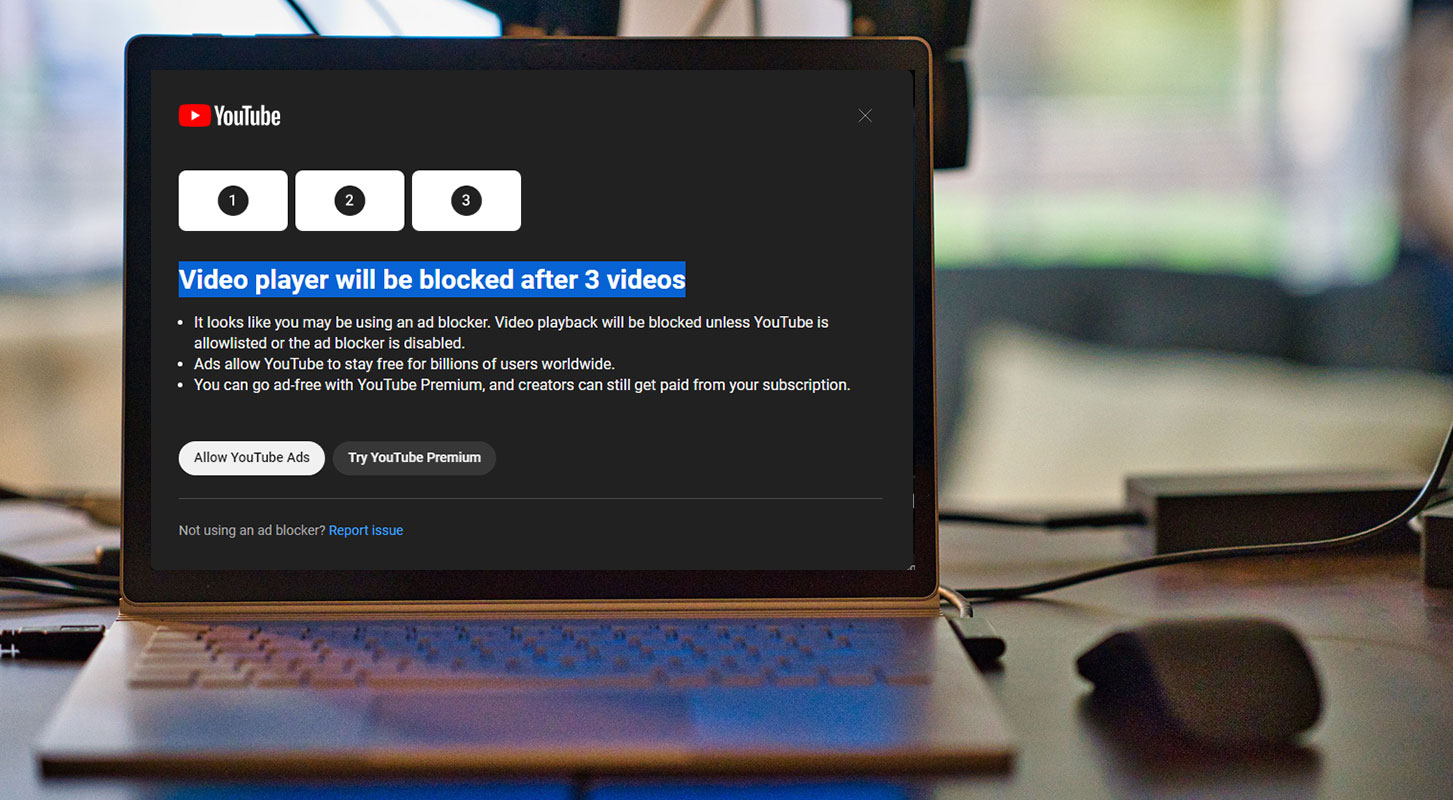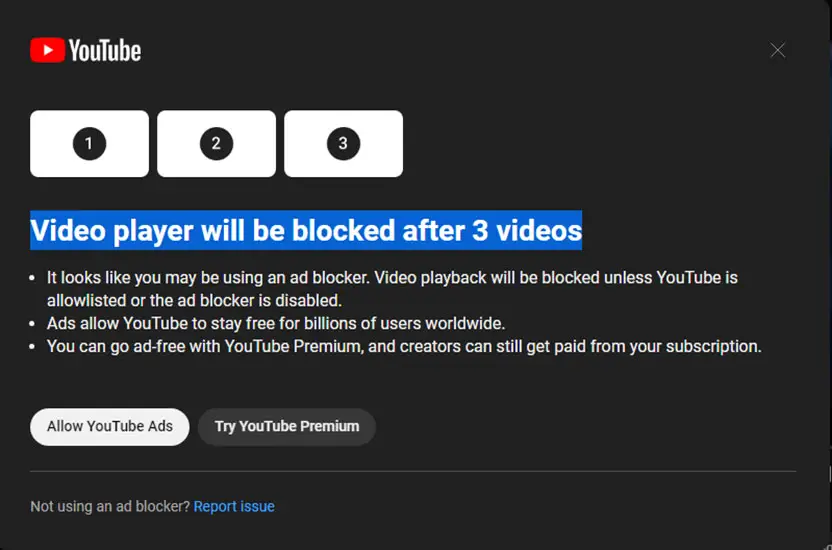YouTube, the popular online video platform, has become a go-to source for entertainment and information. With millions of videos available, users can enjoy various content. However, advertisements on YouTube can be intrusive and disrupt the viewing experience. As a result, many users have turned to ad blockers to avoid these interruptions. But recently, YouTube has taken a stricter stance against ad blockers, introducing a new policy that blocks access to the video player after three violations. In this article, we will explore this development and its implications.

YouTube and Ad Blocker
YouTube has revolutionized the way we consume video content. The platform offers diverse videos, from music to tutorials, vlogs to documentaries. However, advertising is essential to YouTube’s revenue model, displaying ads before, during, or after videos. This has led to the rise of ad blockers, which allow users to bypass these ads and enjoy uninterrupted viewing. While ad blockers have been popular for many users, YouTube has started cracking down on their usage.
The Experiment: Popups and Ad Blockers
In a recent experiment, YouTube began sending popups to users on the free tier who were detected to be using ad blockers. These popups aimed to notify users that ad blockers are not allowed on the platform. The initial version of the popup was a simple warning message urging users to turn off their ad blockers or consider upgrading to YouTube Premium. This subscription-based service offers an ad-free experience.
YouTube Soon Block After 3 Videos if you use Ad Blocker- The Revised Popup and the Three-Strikes Policy
Following the initial experiment, YouTube has now introduced a revised popup version. The new popup includes three numbered white boxes, indicating that the video player will be blocked after three instances of ad blocking. The phrasing in the popup remains similar to the previous version, emphasizing the importance of turning off Ad Blockers to continue using YouTube without restrictions.

YouTube’s three-strikes policy means that if a user continues to use an ad blocker after being warned three times, their access to the video player will be blocked. This is a significant escalation in YouTube’s efforts to combat ad blockers and ensure a fair ad-supported ecosystem.
YouTube’s Aggressive Approach
The introduction of the three-strikes policy reflects YouTube’s determination to tackle the issue of ad blocking. By implementing this policy, YouTube aims to protect the revenue generated through advertisements and maintain a sustainable platform for content creators. While some users may view this approach as aggressive, it is essential to understand its rationale.
YouTube relies on advertising as its primary source of revenue. Ads enable creators to monetize their content and provide viewers with free access to a vast library of videos. Users bypass the system sustaining YouTube’s ecosystem when they employ ad blockers. Therefore, YouTube’s efforts to discourage ad blocking can be seen as a measure to safeguard its business model.
User Reactions and Potential Impact
News of YouTube’s stricter approach to ad blockers has sparked user discussion. Many are concerned about the implications of this policy and the potential limitations it may impose on their viewing experience. Some users have reported that the restrictions do not currently affect popular ad blockers like uBlock Origin. However, it is essential to note that YouTube’s measures are likely being tested with a limited number of users, and the full extent of their impact is yet to be determined.
YouTube Premium as an Alternative
For users who want to enjoy an ad-free experience on YouTube without encountering the three-strikes policy, YouTube Premium offers a solution. Users can access YouTube content without ads with a monthly or annual subscription fee. YouTube Premium also provides additional features such as offline viewing, background play, and access to YouTube Music Premium. By subscribing to YouTube Premium, users can support content creators while enjoying uninterrupted viewing.
FAQs
Can I still use ad blockers on YouTube?
While YouTube is taking a stricter approach to ad blockers, the restrictions’ full extent and impact are yet to be determined. Some popular ad blockers may still function as usual.
What happens if I receive three strikes for ad blocking?
If you receive three strikes for ad blocking on YouTube, your access to the video player may be blocked. This means you cannot view videos until the issue is resolved.
Is there an alternative to using ad blockers on YouTube?
Yes, YouTube Premium offers an ad-free experience. By subscribing to YouTube Premium, you can enjoy uninterrupted viewing without encountering the three-strikes policy.
How much does YouTube Premium cost?
YouTube Premium is available at a monthly subscription fee of $12 in the US or $120 per year. The pricing may vary depending on your region.
What additional features does YouTube Premium offer?
In addition to ad-free viewing, YouTube Premium provides features such as offline viewing, background play, and access to YouTube Music Premium.
Wrap Up
YouTube’s decision to block access to the video player after three instances of ad blocking reflect its commitment to maintaining a sustainable ad-supported platform. While introducing the three-strikes policy may be seen as aggressive, it is essential to understand the reasoning behind YouTube’s actions. By discouraging ad blocking, YouTube aims to protect the revenue stream that supports content creators and offers free access to a wide range of videos. As YouTube continues to evolve, it will be interesting to observe the impact of these measures and how users adapt to the changing landscape.

Selva Ganesh is the Chief Editor of this Blog. He is a Computer Science Engineer, An experienced Android Developer, Professional Blogger with 8+ years in the field. He completed courses about Google News Initiative. He runs Android Infotech which offers Problem Solving Articles around the globe.



Leave a Reply